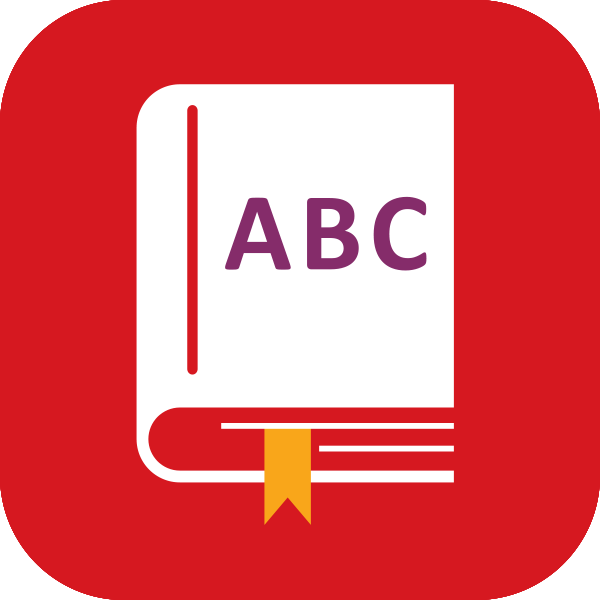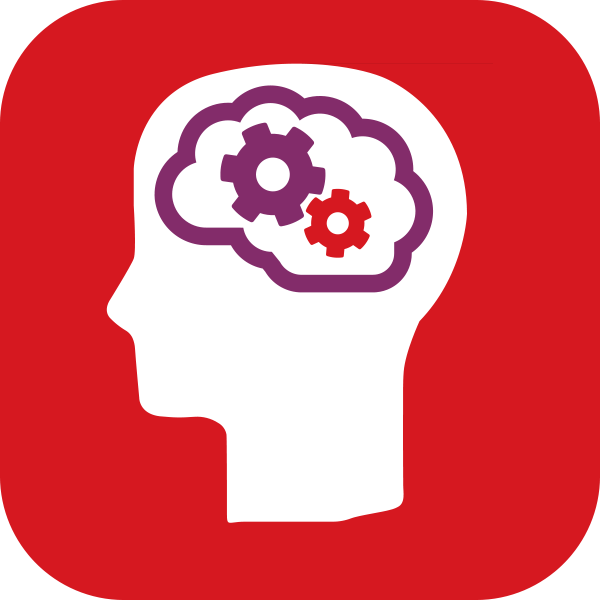“ ”
Prior to considering the impact, it is important to appreciate the full context under which pupils, staff and parents have been working, namely:
- Remote learning for the majority of pupils from March 2020
- Class bubbles, staggered start and end times, enhanced cleaning regime, temperature checks from September 2020
- Class bubble isolation and individual isolation upon a positive case from September 2020
- Remote learning from January 2021
These measures all impacted heavily on the normal educational process across all schools. To gauge the effect on pupil learning and progress, we adopted a two-stage approach:
- Teachers’ professional judgement and feedback
- GL Assessment tools – namely the Progress Test in English (PTE), Progress Test in Maths (PTM) and Cognitive Abilities Test 4 (CAT4)
As a school that has been using PTE, PTM and CAT4 for several years, we were well positioned to know exactly where our pupils should be at each stage of their educational journey and their areas of relative strength and development.
Approach
In order to ascertain the impact as accurately as possible, we used a three-pronged strategy that included:
- A cohort comparison of performance for the same pupils in both PTE and PTM for October 2019 and October 2020.
- A cohort comparison of performance for the October 2020 cohort against the Holy Family three-year average for the same assessment at that primary stage.
- A cumulative band (i.e., stanine 1-3, stanine 4-6 and stanine 7–9) shift comparison between 2019 and 2020 as well as a band comparison against the Holy Family three-year average for the same assessment at the same primary stage.
A key decision in our approach was to look at the performance movements and cumulatives at a stanine level across both the year and the three-year period. This enabled us to identify the impact of Covid-19 and the associated measures at a refined level.
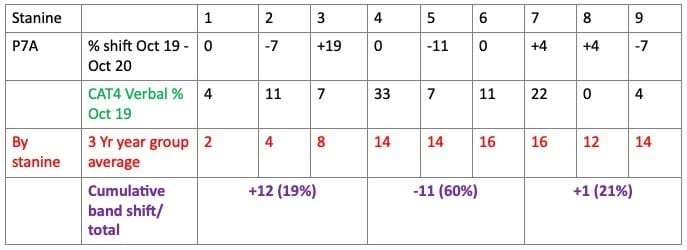
Fig 1: P7 PTE

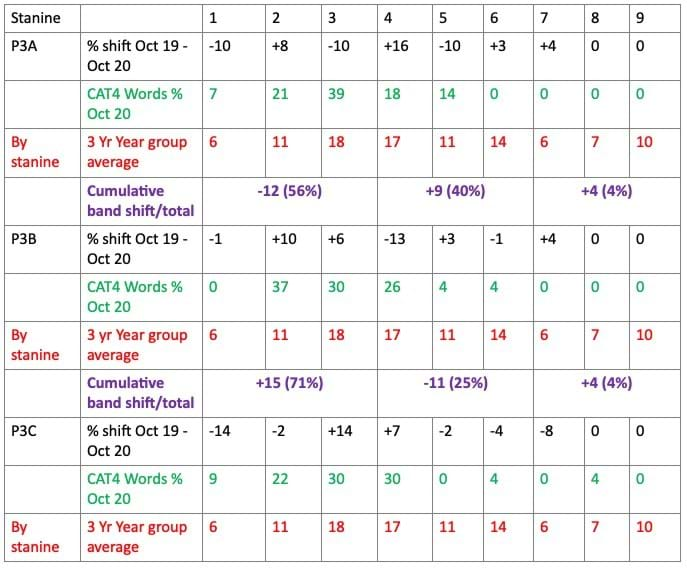
Fig 2: P3 PTE

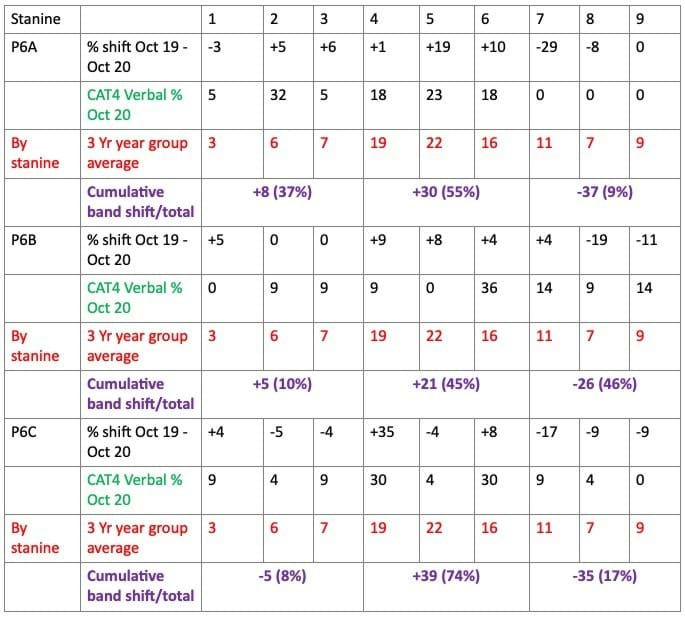
Fig 3: P6 PTE

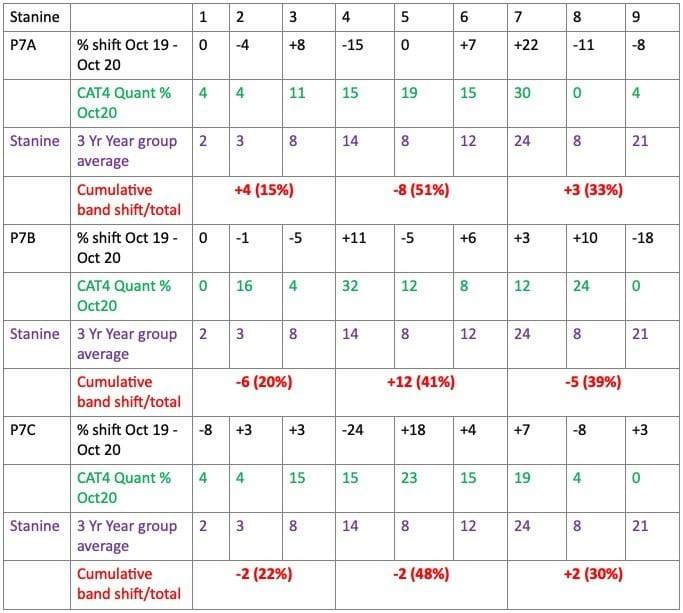
Fig 4: P7 PTM

The time invested in this detailed analysis was well worth the effort, as it revealed expected and unexpected impacts. The key learnings were:
- The impact was not uniform across the school, nor was it consistent within a year group cohort. Our experience highlighted a much deeper impact on the younger pupils than the older pupils. This is best exemplified by the performance outcomes for the P3 cohort of pupils as outlined in Fig 2.
The stanine band totals for all three classes in the year group were strikingly below the Holy Family three-year average. In fact, this year group produced figures in the below average band that we have never seen at the school.
Upon consideration, this level of impact appears to be related to the fact that these young pupils had less of a literacy foundation built, compared to older age groups when the pandemic began to impact on schooling.
-
A very clear impact across the year groups was the fact that many upper ability pupils did not sustain their previous performance position during the pandemic. This was clearly evidenced by the stanine shift data. By examining this stanine shift data and cumulative band shift data, it is very apparent that either these pupils moved down the stanine levels within the band or moved out of the band entirely.
This is seen in Fig 3 of the P6 year group, with all classes showing significant drops in the cumulative band total for the top three stanines.
- The third clear educational impact has been that our P7 pupils, while performing significantly higher than the national average, have not yet secured the levels that would be expected in either PTE or PTM when compared to the Holy Family three-year average. The Holy Family three-year (2017-2019) average in PTM for the stanine 7-9 band was 53%. This was not the case for the October 2020 cohort. This is clearly an outcome of the disrupted education, the impact of remote learning as well as the emotional impact of the pandemic on families and children.
Where do we go from here?
The purpose of assessment at Holy Family has always been to inform practice and support pupil progress. This analysis will enable the school to:
- Target specific pupils and cohorts for additional support
- Timetable the implementation of support to secure early successes for those pupils who are currently primed for progress
- Ensure a deeper support programme for those classes or pupil groups that require a longer-term intervention.
- Ensure that we complete our summer term PTE and PTM, as this will enable us to track the progress that has been made during the period of remote learning from January 2021 to March 2021. Furthermore, it will enable us to explore any variation in outcomes between those pupils involved in remote learning for that period and those who attended school for supervised learning under the key worker category.
Most importantly, this analysis has allowed the staff to identify exactly where all the children within their classes are presently and to therefore take that as the recommencement point for their learning journey.
In conclusion, this analysis has allowed our school community to further appreciate the value of being a consistent GL Assessment user. Without GL Assessment we would not have been able to acquire the aforementioned perspectives.
Holy Family Primary and Nursery School is one of our Advocate Partners


